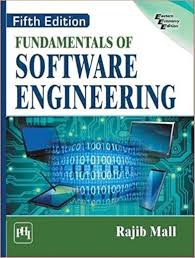
Software project management is crucial to the success of any software development or maintenance project. The roles and responsibilities of the project manager is numerous and varied. However, at the broad level, these can be classified in to the project planning and monitoring and control activities. Project planning involves making cost, effort, and duration estimation and preparing various types of plans such as schedule, configuration management, risk management, quality management, staffing plan, etc. The monitoring and control activities encompass keeping track of the progress and removing bottlenecks using techniques such as PERT, GANTT, and also effective risk management, team building, etc.

Image analysis is a broad term that may be defined quite differently by those working in diverse fields. Originally, image analysis was used to describe the extraction of numerical information from pictures. Since the process of placing pictures into a form that could be analyzed digitally was cumbersome, and the computers used to analyze such pictures were slow, image analysis was performed ‘off line’ and quite often at sites far removed from where the image was originally recorded. As software techniques for image analysis improved, and computers became faster and more affordable, image analysis became more widely used, in many fields and disciplines. Image analysis encompasses many areas: machine vision, graphic arts, pattern matching, photometry, OCR , surveillance, security, and scores of others.

Software engineering is a discipline that applies engineering principles to design, develop, test, and maintain software applications, aiming to create reliable, efficient, and maintainable software solutions

The objective of the course is to understand the basic theory underlying machine learning and to develop algorithms and models that enable computers to learn patterns from data and make predictions or decisions without explicit programming. In other words, the primary goal of machine learning is to enable machines to learn from experience and improve their performance on a specific task over time.

The course introduces main concepts of networking; application areas; classification; reference
models; transmission environment; technologies; routing algorithms; IP, UDP and TCP protocols;
reliable data transferring methods; application protocols; network security; management systems;
perspectives of communication networks. The course structure consists of lectures
in computer classroom and individual work.